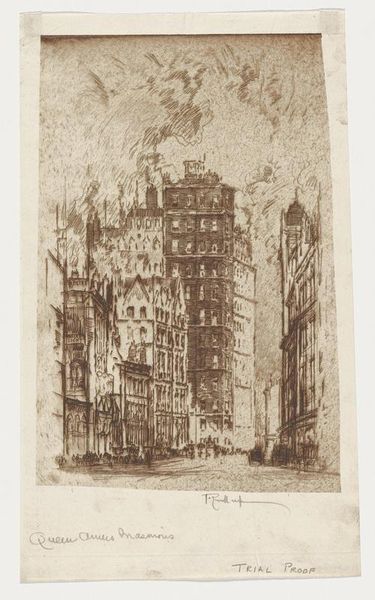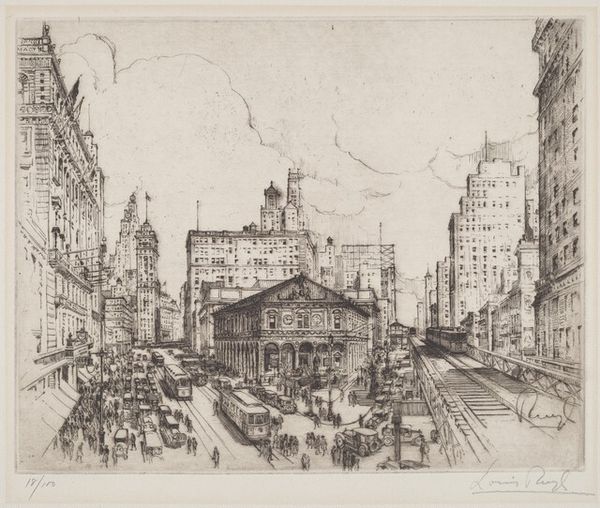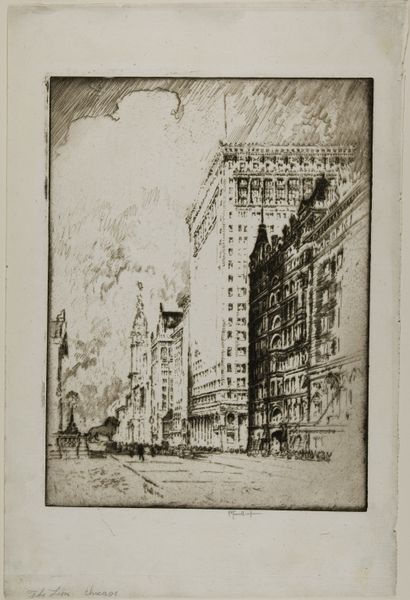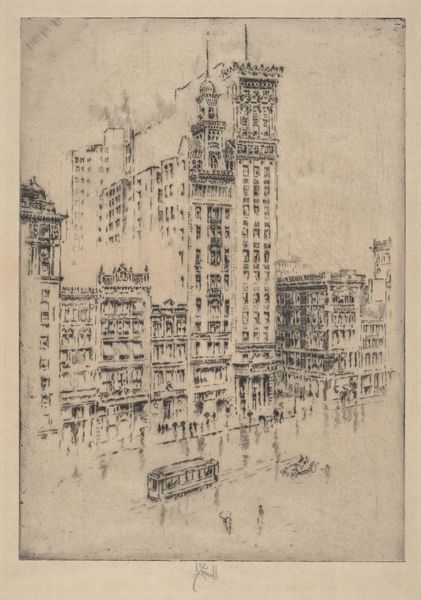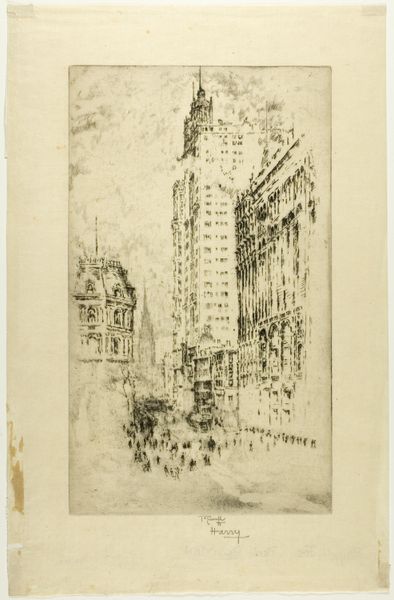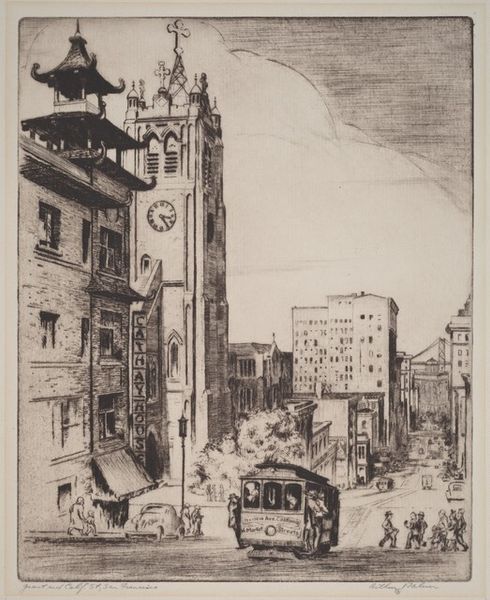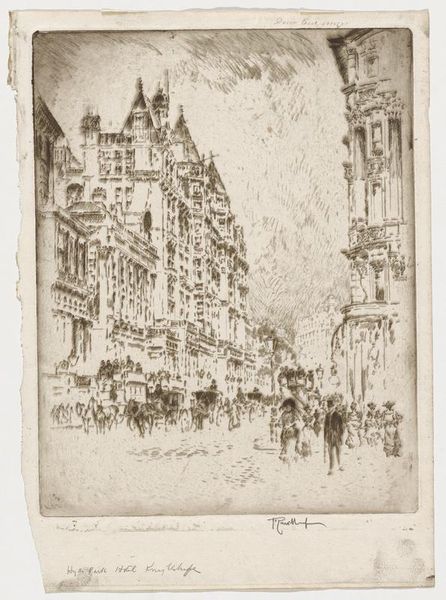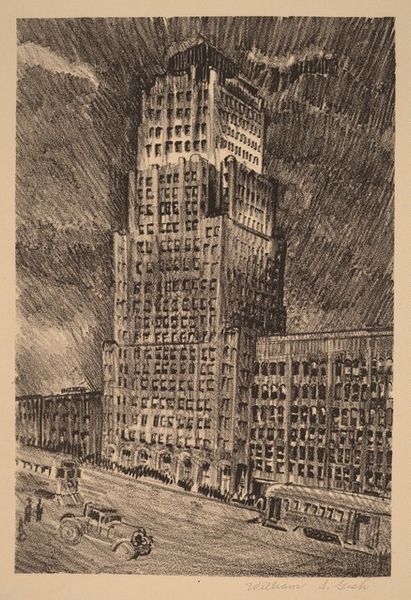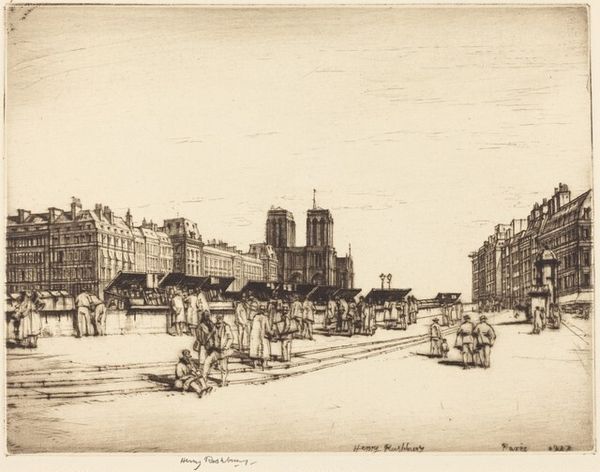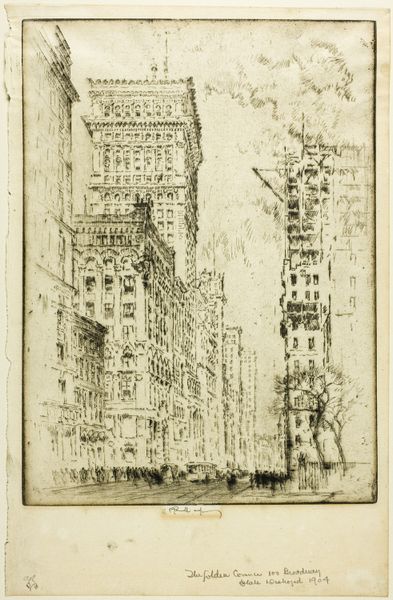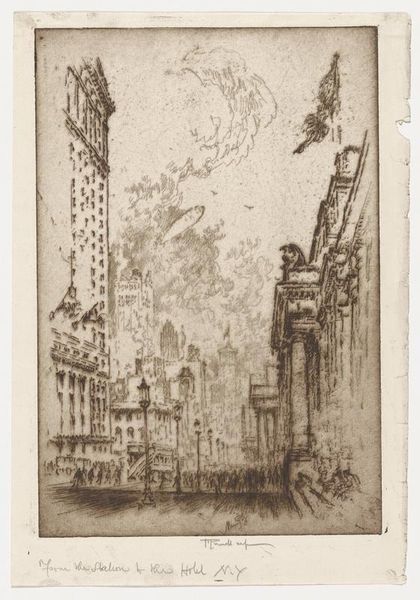
print, etching
#
art-deco
# print
#
etching
#
cityscape
#
realism
Dimensions: image: 175 x 119 mm sheet: 280 x 194 mm
Copyright: National Gallery of Art: CC0 1.0
Editor: This is Henry Bringle Shope's etching of *The Plaza Hotel*, dating to around 1925. The first impression is that it perfectly captures the energy of New York City back then; so much going on in a small space. How do you interpret this work? Curator: The image presents a fascinating interplay between old-world grandeur and burgeoning modernity, wouldn’t you say? Look at the architectural details, almost gothic in their vertical thrust, and the contrast with the automobiles below. It evokes a psychological tension between aspiration and grounded reality. Does it spark any connections to other images you've encountered? Editor: It’s definitely got that “Gatsby” feel. What about the lone figure with a dog in the foreground? What could that symbolize? Curator: Interesting observation. The figure offers a focal point amidst the frenetic energy, a potential allegory for the individual experience amidst rapid societal change. A dog at its feet suggests faithfulness or perhaps the primal, the instinctual navigating the modern maze. Consider also the placement of the fire hydrant: what comes to mind? Editor: Safety, maybe? City infrastructure? I’m not sure about the symbolism. Curator: Or potential disruption? The fire hydrant carries both connotations, safety and destructive force, like so much else in a modernizing world. Do you feel Shope is celebrating or critiquing this modern condition? Editor: That’s a good question. It feels…neutral, almost detached, capturing a moment in time. I never thought of it that way before. Curator: It speaks to the power of symbols. Hopefully, you see how everyday elements can unlock a depth of cultural meaning. Editor: Absolutely, thanks for shedding new light on such an evocative print.
Comments
No comments
Be the first to comment and join the conversation on the ultimate creative platform.
